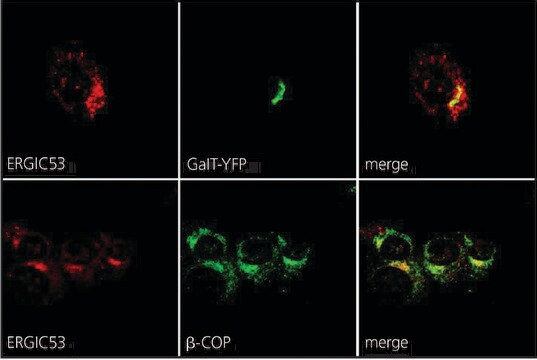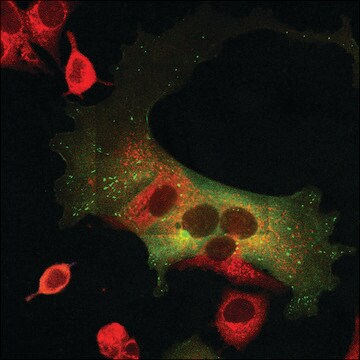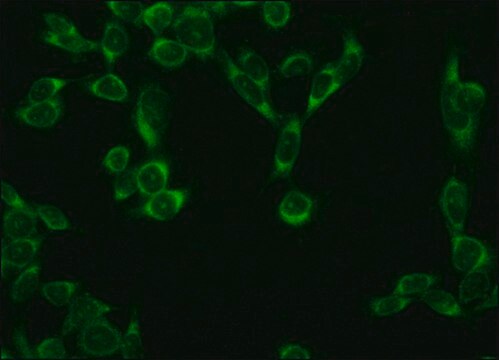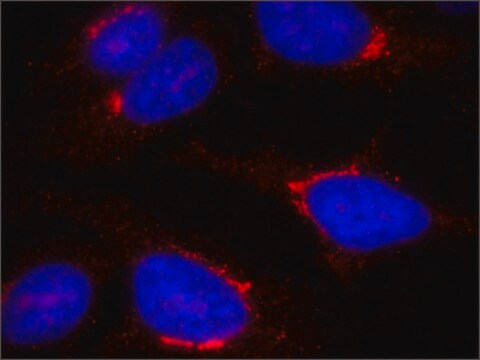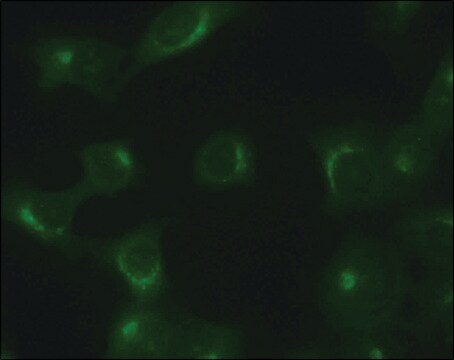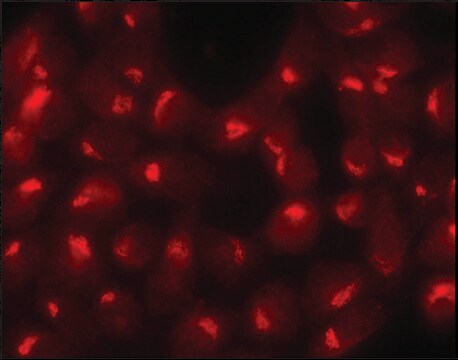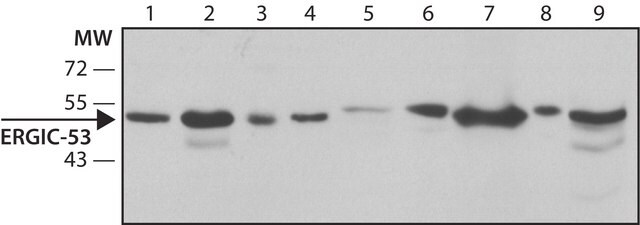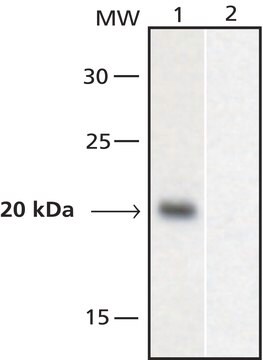G6160
Monoclonal Anti-β-COP antibody produced in mouse
clone maD, ascites fluid
Sinónimos:
Anti-BARMACS, Anti-COPB
About This Item
Productos recomendados
origen biológico
mouse
Nivel de calidad
conjugado
unconjugated
forma del anticuerpo
ascites fluid
tipo de anticuerpo
primary antibodies
clon
maD, monoclonal
contiene
15 mM sodium azide
reactividad de especies
human, rat, hamster, monkey
técnicas
indirect immunofluorescence: 1:80 using cultured Chinese hamster ovary (CHO) cells
microarray: suitable
western blot: 1:1,000 using a preparation of stacked Golgi membranes from rat liver
isotipo
IgG1
Nº de acceso UniProt
Condiciones de envío
dry ice
temp. de almacenamiento
−20°C
modificación del objetivo postraduccional
unmodified
Información sobre el gen
human ... COPB1(1315)
rat ... Copb1(114023)
Descripción general
Especificidad
Inmunógeno
Aplicación
Immunofluorescence (1 paper)
- analysis at a working dilution of 1:1000 using subcellular proteins from rat PC12 (pheochromocytoma) cells
- analysis of gradient fractions of cerebral microvessels to confirm the separation of plasma membrane lipid raft domains from intracellular membranous components
- detection of the Golgi marker protein β-COP in exosome-enriched extracellular microvesicles (eMV) preparations from untreated HeLa cells
It is suitable for immunostaining of β-coatomer, that is used as a intracellular, Golgi protein marker :
- to confirm that CD14 staining is localized to the cell surface of HAEC
- for examining the localization of Meltrin β in the Golgi apparatus and its vicinity in neurons prepared from developing dorsal root ganglia of mouse embryos
- in NB4 and NB4-LR1 cells to examine the colocalization of PKA regulatory subunits
- in CHO cells to examine colocalization of GFP-Rab24
It is suitable for use in cell-surface ELISA of human aortic endothelial cells (HAEC)
It is also suitable for western blot analysis at a working dilution of 1:1000 using a preparation of stacked Golgi membranes from rat liver, for indirect immunofluorescence at a working dilution of 1:80 using cultured Chinese hamster ovary (CHO) cells and for microarray.
Acciones bioquímicas o fisiológicas
Cláusula de descargo de responsabilidad
¿No encuentra el producto adecuado?
Pruebe nuestro Herramienta de selección de productos.
Producto relacionado
Código de clase de almacenamiento
10 - Combustible liquids
Clase de riesgo para el agua (WGK)
nwg
Punto de inflamabilidad (°F)
Not applicable
Punto de inflamabilidad (°C)
Not applicable
Certificados de análisis (COA)
Busque Certificados de análisis (COA) introduciendo el número de lote del producto. Los números de lote se encuentran en la etiqueta del producto después de las palabras «Lot» o «Batch»
¿Ya tiene este producto?
Encuentre la documentación para los productos que ha comprado recientemente en la Biblioteca de documentos.
Nuestro equipo de científicos tiene experiencia en todas las áreas de investigación: Ciencias de la vida, Ciencia de los materiales, Síntesis química, Cromatografía, Analítica y muchas otras.
Póngase en contacto con el Servicio técnico